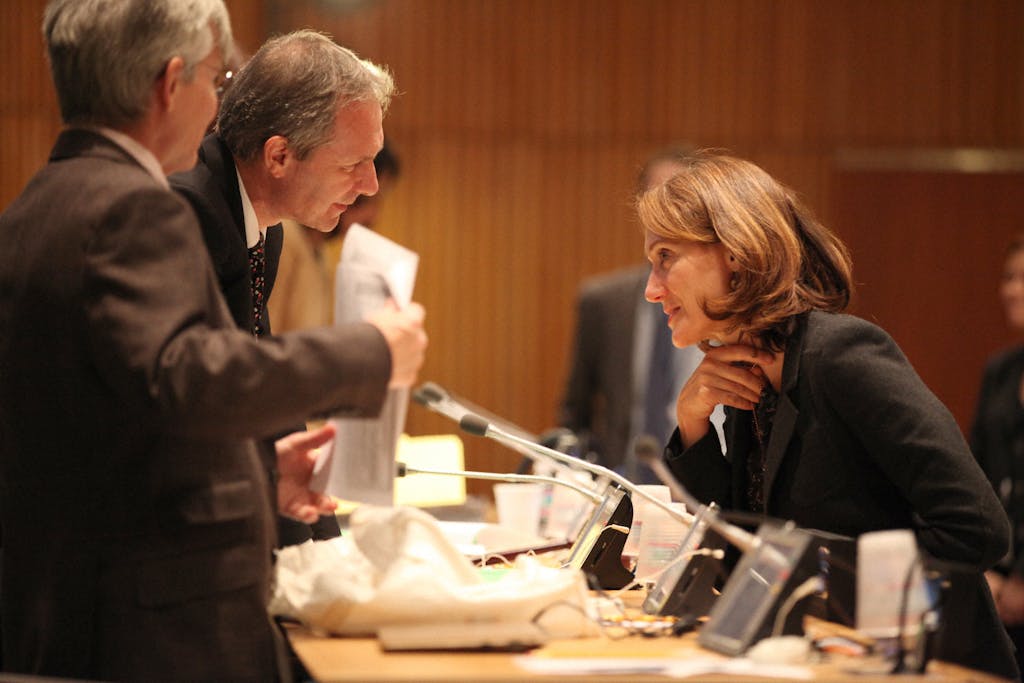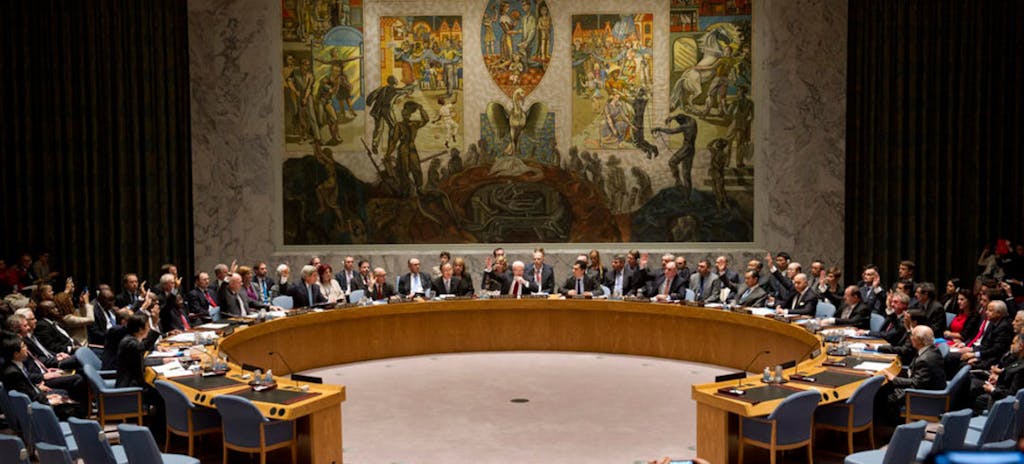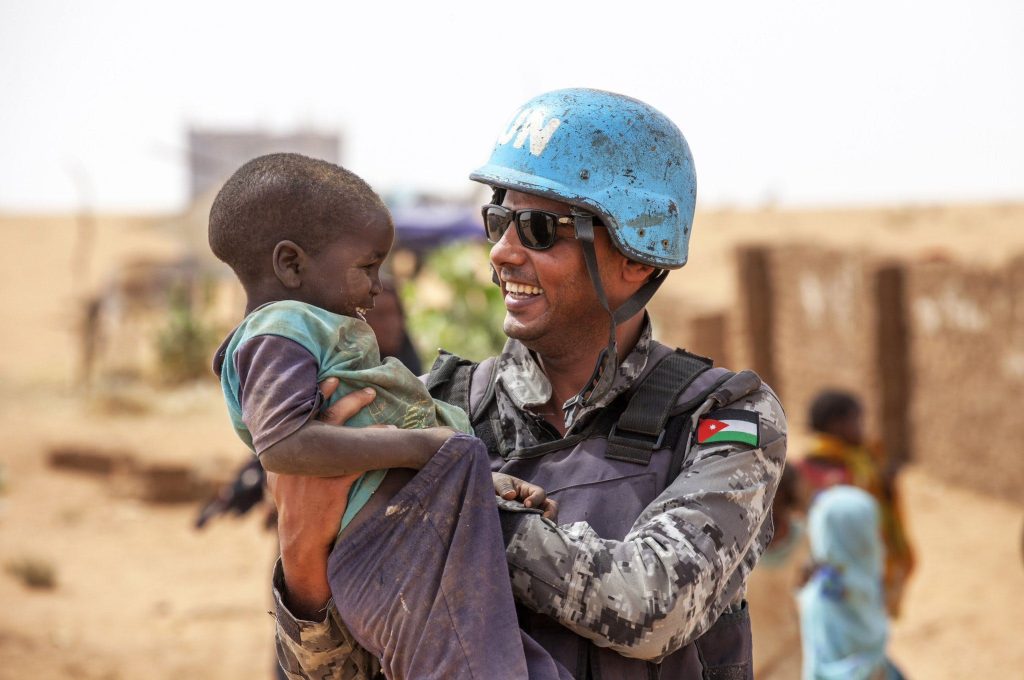Peace seems to be a missing piece of many SDG conversations, but the lack of peace is showing up in many recent – and alarming – global reports.
According to a new report from UN’s World Food Program (WFP) and Food & Agriculture Organization (FAO), conflict is driving unprecedented levels of hunger: 56 million people are in need of food aid in eight conflict zones. Another report from UNICEF estimates that an unacceptable amount of children – some 34 million – are living through conflict and disaster without access to basic protections, including 6.6 million children in Yemen, 5.5 million children in Syria, and 4 million children in the Democratic Republic of the Congo (DRC).
It’s clear that conflict poses a grave threat to human rights and development. To learn more about the crucial linkages between conflict and development, the role of the UN, and how peace became a key part of the Sustainable Development Goals (SDGs), I spoke with the UN Foundation’s Deputy CEO, Ambassador Elizabeth Cousens.
Among many impressive roles in international relations, Elizabeth has served with UN political missions in Nepal and the Middle East, worked as an analyst in conflict zones, including Bosnia and Haiti, and was lead U.S. negotiator on the Sustainable Development Goals (SDGs). She’s also researched and written extensively on conflict management and peace processes.
Chandler Green: Can you explain how conflict impacts development? Why do we need to focus on peace if we want to achieve the SDGs?
Elizabeth Cousens: Peace is absolutely essential to development. The evidence is overwhelming. Economies and societies are blocked in their development progress if they are affected by conflict and high levels of violence. It’s projected right now that by 2030, if we stay on our current path, more than half of the extreme poor in the world will live in conflict-affected countries. So that tells you right there why this matters.
When we started the SDG negotiations, we were still a few years out from the Millennium Development Goals (MDGs) countdown. At that point, there was a big statistic that was heard around the world: There was not a single low-income, conflict-affected country that was on track to reach a single MDG. And that really got people’s attention.
It helped people realize that peace is an essential underpinning of development. Conflict guts economies, wrecks societies, and breaks social bonds. It does incredible amounts of damage in ways that makes it hard for countries to recover, to grow, and to thrive.
What was really powerful in the SDG context was that we heard from conflict-affected countries themselves about their own transitions from war to peace and how much peace mattered for them in development.
CG: Why was it so important to include “SDG 16: Promote just, peaceful and inclusive societies” in the SDG agenda?
EC: Although it is really clear that peace is essential to development, it is also a controversial point for some. We needed to have a topline goal to send a signal about how important this is – not just peace but good governance, the absence of corruption, and respect for human rights. That was the ambition a diverse coalition of countries fought for – to put “peaceful, just, and inclusive societies” at the heart of this agenda.
SDG 16 is such a crucial building block for anything that families, communities, and societies want to achieve in the world. It is essential for the SDGs to succeed. And that was an important breakthrough compared to how development had been talked about and thought about in the past.
CG: As a former negotiator, you’ve had an insider’s view in the creation and shaping of the SDGs. What was the process like for SDG 16?
EC: It was raw. It was lively. And it was really hard won.
There has been a long-standing debate about how conflict and development relate to each other, and at the UN especially this has been a contentious and tough issue.
But the SDG negotiations allowed more voices to enter the debate which changed the dynamics. At an early point in the negotiations, the African Union came out with their Common African Position on what they wanted to see from a new set of development goals.
They put peace and governance among their top priorities, which changed the way the negotiations unfolded. A number of countries who had lived through their own civil wars were also the most ardent advocates on why this matters: Liberia, Timor-Leste, Sierra Leone, Guatemala, El Salvador, and others. They said, “This is essential for us. This is our story.”
There was a lot of heat in the room along the way. So it was really remarkable that we were able to reach consensus at the end.

CG: Why was there such debate among countries about peace and development?
EC: There was a longstanding worry among some that if you connect peace and security to development, you’re going to politicize development or introduce security considerations where they don’t belong and perhaps that could open the door to political agendas or not thinking about development in its own terms. That was an anxiety and concern for so long and had really polarized debate.
A lot of good work was done in 1990s and 2000s by the UN, the World Bank, individual countries, and academics around that linkage, but the politics were stuck. What changed with the SDGs was elevating the voices of countries who had experienced conflict themselves. That’s what really made the difference.
The SDG negotiations were different than other UN negotiations. They were structured in a way that individual countries spoke much more for themselves than they often do in international negotiations. You could see this really rich tapestry of experience that people were bringing to the table.
From the U.S. perspective, we had our own concern about high levels of violence in our own society. At the time, if you looked at the UN’s annual tracking of violent deaths per 100,000, the U.S. wasn’t doing so well. It was then at about the dead median among countries, so those were issues that the U.S. wanted to work on just like other countries did. That also helped the dynamics since we were able to share common purpose and build common ground.
CG: That’s an interesting insight because it shows that the UN is one of the only platforms where that type of conversation can happen.
EC: Yes. It’s also a place where individual leadership makes a real difference. If I had to pick the main reason we got Goal 16 at the end of the day, I would have to credit two individuals – the representatives from Timor-Leste and Liberia who got everybody to pay attention. Other countries had constructive roles too, but these two countries played a really outsized role. They spoke with such authenticity and command, and people listened.
CG: The Secretary-General has made conflict prevention and peace building key priorities of his leadership. Can you provide more detail on what the UN does to promote peace?
EC: Remember why the UN was created in the first place after the Second World War. Its core mission was to prevent the scourge of war and to maintain international peace and security. If you have to name its most fundamental job, that’s it.
Secretary-General Guterres also comes into his role having spent a decade as the UN High Commissioner for Refugees and having worked in conflict zones around the world with a deep passion for peace. You can see his conviction that this is one of the most important parts of his day job.
How the UN does that involves many tools. They include the exercise of diplomacy, fielding envoys to any number of conflicts, running peace operations, doing post-conflict peacebuilding, and much more.
Obviously, the UN also works on the drivers of conflict in the first place, whether it’s abuse of human rights and the exclusion of different groups, economic divides, or some of the governance issues we talked about.
CG: And another one of those drivers is climate change. How is climate change amplifying challenges with conflict?
EC: It’s interesting because in the same way that we were talking about the tension between peace and development, there’s also been a tension between climate and security where understanding about how they connect is still emerging.
These are complex issues, and people are still working to understand the links as well as figuring out solutions, but you can already point to several dimensions.
One is that climate change is creating profound, interacting resource pressures. These will produce incredible stresses on societies in terms of the availability of resources, social tensions, and more – and those are pressures that increase vulnerability to conflict. Rising sea levels are clearly going to produce climate migration. Greater risks in flood zones will produce other kinds of internal migration as well as migration across borders. These dynamics all have implications for stability.
Thawing ice will open up new sea lanes. Countries’ ability to grow food will change. In the short term, some countries will find themselves winners or losers in terms of those kind of strategic resources. How will that all play out in terms of specific security challenges? It will change over time as our planet changes, and we need to figure it out and anticipate and manage the consequences.
I’m really proud of one of the breakthroughs we made when I served at the U.S. mission a few years ago. We worked very hard to get climate change addressed by the Security Council, which was (and for some countries still is) controversial.
We worked closely with Germany, which was the president of the Security Council at the time, elected members of the Council, small island states and many others to get an agreed outcome from the Security Council that acknowledged that there were security risks from climate change. Even if we don’t know exactly what they are or yet how to deal with them, we know that climate change poses real threats. And we have to start thinking about it.

CG: Many businesses and organizations in the development sector don’t have a lot of experience working on conflict issues, yet we know more resources and attention are needed. You’ve worked across the peace and development sectors – how can others get involved?
EC: Part of it is just knowing what you don’t know and being prepared to learn. It’s very easy in development, or in business, or in any of our worlds to stay in your lane, and you don’t always think about what’s outside of it. Development work is sometimes very technical and doesn’t always engage the larger political context.
The first and most important task is to learn about the place you are operating in – whether you’re a business with a global supply chain, a small business owner, or a development professional. It’s so important to do your homework to understand the full context where you are operating.
You also really need to understand ways you might be contributing to conflict risk or dynamics – whether intentionally or not. There are also opportunities for investors, businesses, and others to play a constructive role in conflict settings and especially conflict recovery.
That can be a challenge for all kinds of obvious reasons having to do with risk, violence, and instability. But there is renewed interest today and innovative work being done to explore ways the private sector and investors can be a positive force in conflict and humanitarian settings – for example, creating new instruments that can help surge resources into even very risky places – so you can contribute some of the ingredients for recovery that societies urgently need.
SDG 16: Promote just, peaceful and inclusive societies will be discussed and reviewed at this summer’s High-level Political Forum on Sustainable Development. To learn more about the goal, click here.

